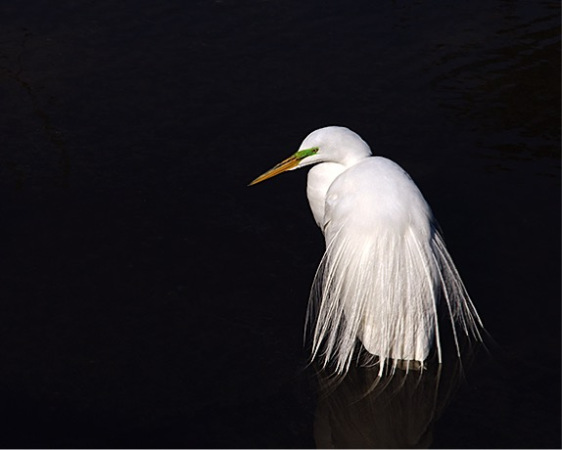
 We stroll two blocks, past grand Italianate manors and restored Victorian row houses, to a handsome mid-19th century city park—the oldest in the Louisiana Purchase Territory. Paved pathways meander through 30 acres of enormous shade trees and lovingly tended flower beds, past fountains, a graceful bridge, and a gazebo, all within the protective embrace of the original cast iron perimeter fence. There’s even a lake, complete with fish, semi-aquatic turtles, a small flotilla of Canada Geese (Branta canadensis), Mallard ducks (Anas platyrhynchos)… and what Victorian-era water-feature would be complete without a few imperious Mute Swans (Cygnus olor)?
We stroll two blocks, past grand Italianate manors and restored Victorian row houses, to a handsome mid-19th century city park—the oldest in the Louisiana Purchase Territory. Paved pathways meander through 30 acres of enormous shade trees and lovingly tended flower beds, past fountains, a graceful bridge, and a gazebo, all within the protective embrace of the original cast iron perimeter fence. There’s even a lake, complete with fish, semi-aquatic turtles, a small flotilla of Canada Geese (Branta canadensis), Mallard ducks (Anas platyrhynchos)… and what Victorian-era water-feature would be complete without a few imperious Mute Swans (Cygnus olor)? When Lafayette Park was first dedicated, it would have been a rare sight indeed to see those elegant courtship aigrettes on anything other than a lady’s hat. Great Egrets were hunted almost to the point of extinction to satisfy fashion’s dictate that a proper, self-respecting adult female must never be seen in public without a pile of millinery fabric, lace, ribbons, flowers, feathers, and avian body parts balanced on her head. Egret plumes, in particular, were all the rage.
When Lafayette Park was first dedicated, it would have been a rare sight indeed to see those elegant courtship aigrettes on anything other than a lady’s hat. Great Egrets were hunted almost to the point of extinction to satisfy fashion’s dictate that a proper, self-respecting adult female must never be seen in public without a pile of millinery fabric, lace, ribbons, flowers, feathers, and avian body parts balanced on her head. Egret plumes, in particular, were all the rage. On this morning, though, it was just a solitary Great Egret, a noble wire fox terrier (Queen Victoria herself kept one as a pet), and me, the least pedigreed of the group, standing at the intersection of past, present, and future.
On this morning, though, it was just a solitary Great Egret, a noble wire fox terrier (Queen Victoria herself kept one as a pet), and me, the least pedigreed of the group, standing at the intersection of past, present, and future.